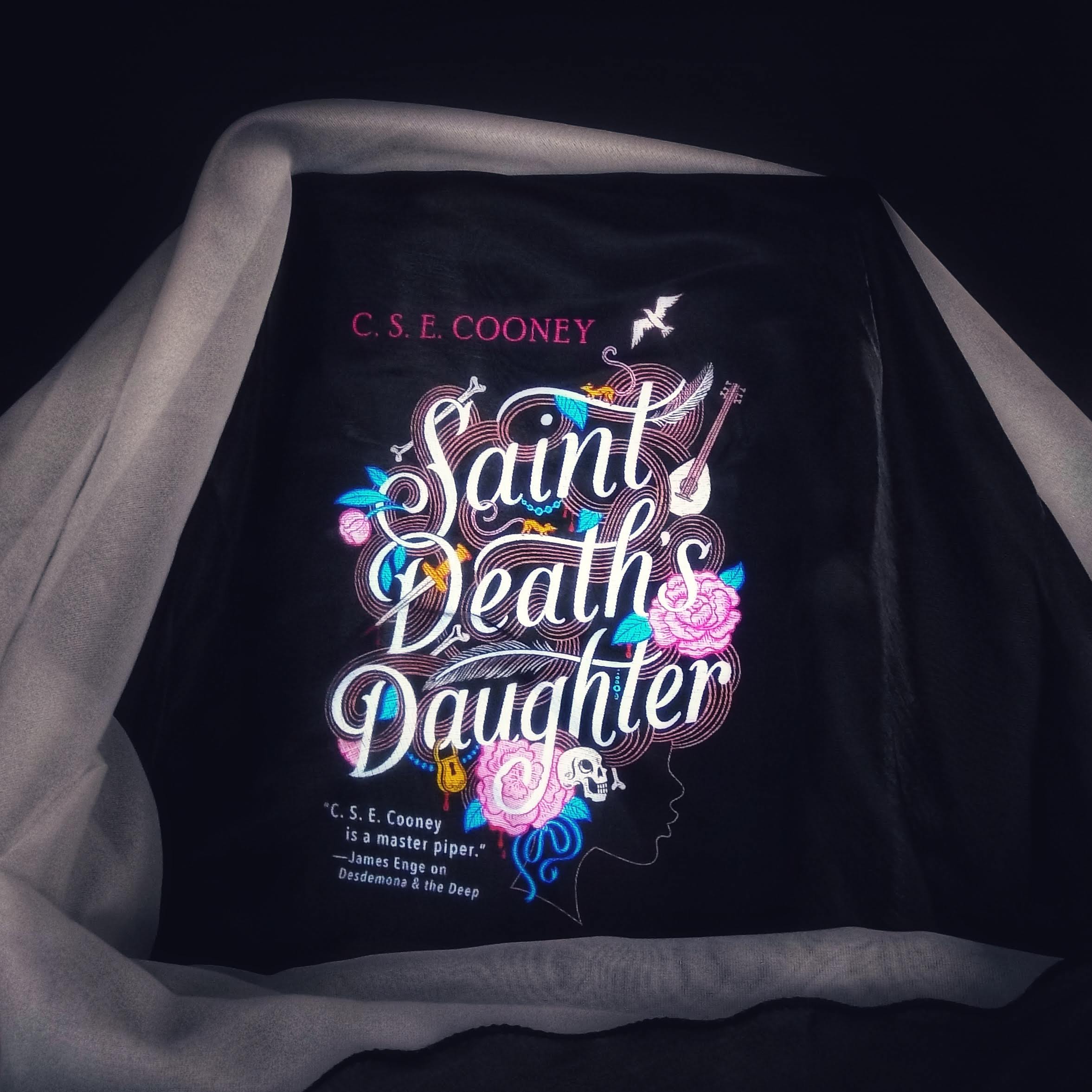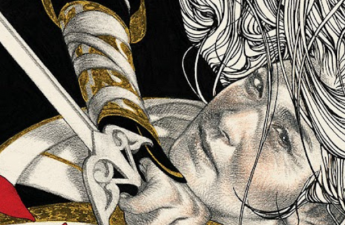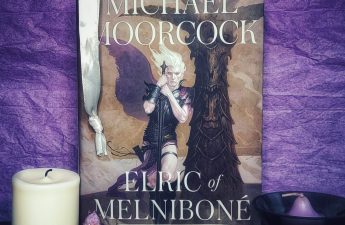Thank you to NetGalley, the publisher, and the author for letting me read an e-ARC of Saint Death Daughter by C.S.E. Cooney. There is no way that I could write a blurb for a book whose events and plot twist and turn like Lanie’s hair on the front cover, so I’m just going to use the publisher’s:
“Nothing complicates life like Death.
Lanie Stones, the daughter of the Royal Assassin and Chief Executioner of Liriat, has never led a normal life. Born with a gift for necromancy and a literal allergy to violence, she was raised in isolation in the family’s crumbling mansion by her oldest friend, the ancient revenant Goody Graves.
When her parents are murdered, it falls on Lanie and her cheerfully psychotic sister Nita to settle their extensive debts or lose their ancestral home—and Goody with it. Appeals to Liriat’s ruler to protect them fall on indifferent ears… until she, too, is murdered, throwing the nation’s future into doubt.
Hunted by Liriat’s enemies, hounded by her family’s creditors, and terrorized by the ghost of her great-grandfather, Lanie will need more than luck to get through the next few months—but when the goddess of Death is on your side, anything is possible.”
C.S.E. Cooney has crafted a vibrant and vivid fantasy world with multiple intricate cultures based around 12 gods and their powers and if you can manage to get into it, the experience is lovely. That being said, there is so much exposition in this book that it took me about 10 chapters to figure out what was happening and you must be prepared for a very character-based book. The plot is an elusive creature ducking in and out of view at times and while I am personally okay with following Lanie through her daily life, I understand that not everyone would be. Cooney’s extensive vocabulary and use of footnotes to provide more family history for the Stones creates an atmosphere equally as eccentric as her main character.
Lanie makes a wonderful character to follow as she attempts to balance her own natural compassion against the expectations of her sister, their ghostly grandfather, and the rest of Liriat, that she be a coldhearted necromancer chomping at the bit to pull skeletons out of living bodies. The vibe of this book is borderline dark academia with the extensive amounts of studying and experiments that Lanie runs and scholarly friends that she makes throughout the book.
The romance that Lanie has with her love interest is one of my favorite things in this novel. The way that she can be as weird or withdrawn as she wants or needs at the moment and her love interest is still hanging on her every word. Their devotion to this macabre girl that could hole herself up in a lab and not talk to them for weeks to months on end is heartwarming. So many of my highlights in this book were just conversations between the two of them that I loved. Reading the letters that the two write to each other was lovely because you could just see how they want to tell the other everything minute detail that has happened in their life and the other wants to read it just as bad.
I loved learning about the different cultures and their views of the gods, specifically the original Quadiíb religion, which is the only one to still hold all twelve gods in equal reverence and balance, and whose language must be spoken in meter and rhyme. The variety of characters that we meet from there provide their own unique perspectives on the practice of magic. The question of heresy or honesty, compassion or judgment, is broached many times but left open for the audience to decide on their own. One of my favorite moments in the book was the acknowledgment of how trauma shapes not only one’s view of both their own culture and religion but of others as well.
The world Cooney has crafted is so effortlessly queer. Lanie’s love interest uses they/them pronouns as do their ommer (gender-neutral form of aunt or uncle with the respective term for their descendant being niephling). On the four Holy Days, many people crossdress and use different pronouns. Anyone can be with anyone else regardless of gender. The important thing about this is that none of it is questioned or unusual, it just is.
Overall I’d give Saint Death’s Daughter 3.75 stars. I truly enjoyed this book and am considering getting my own physical copy but the amount of time it took to get into it and the rambling plot was enough to bring it down from 4 stars.
Get It Here
All links are affiliate links and I make money from you using them.



